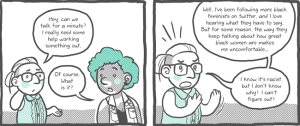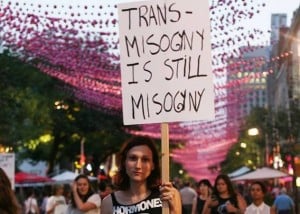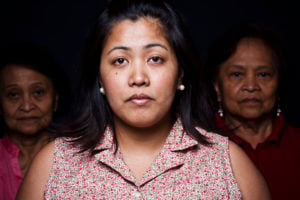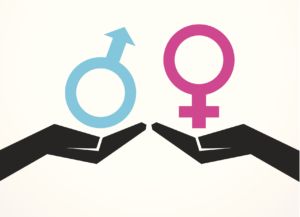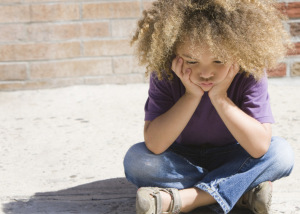
Source: Huffington Post
When Lena Dunham was accused of sexually abusing her younger sister when they were both children based on certain behaviors she described in her new book, a huge controversy erupted. Suddenly, sibling sexual abuse (SSA) became a topic of conversation, and people all over social media and television were debating whether or not Lena’s behaviors were sexually abusive.
It’s easy to understand why such a debate could occur. The truth is that SSA is one of the most under-studied family violence issues. Other concerns, such as parent-child sexual abuse or domestic violence, receive much more research.
This article will hopefully provide some basic information about what we do know about SSA and what’s being done about it.
Is This Really a Problem?
Okay, so the reason that SSA hasn’t been studied very much is because it’s not very common, right? You’d think.
But according to FBI statistics, people under the age of 18 commit about one in every five or six sexual assaults, and other research has found that adolescents are responsible for about 1-in-3 sexual assaults involving victims under the age of 18, and that about half of all sexual assaults committed by an adolescent perpetrator involves a sibling.
Some research estimates that SSA occurs two to five times more often than father-daughter abuse. So, no, it is not entirely uncommon.
And it is a subject that deserves our time and attention so that survivors can receive the support they deserve.
Children’s Sexual Development
Probably the most common point of debate within SSA discussions is what constitutes sexual abuse versus normal exploration as a child, which can occur between siblings.
We all know that children may play doctor, but at what age does that start? You may be aware that children masturbate or explore their genitalia, but perhaps you didn’t realize it could start as early as infancy. Click here to find a detailed summary of normal sexual development for children from birth through 12 years of age.
One important note to make here is that much of the body exploration that happens between children actually isn’t sexual in nature. Rather, it’s born of curiosity. The same way that kids are sponges and want to know everything about everything else, they also want to understand and explore the human body.
Adults, however, are using their own lens when they’re watching this behavior and often ascribe a sense of sexuality where it doesn’t belong.
So it’s absolutely natural for children to be curious and explore their bodies and that of others depending on their stage of development, but there are examples of behaviors that are not considered typical, and may actually be abusive.
Abuser Indicators
Research shows that children who sexually abuse other children are likely to engage in sexual behaviors that are coercive, impulsive, lacking in consent, or aggressive.
In addition, sexual behaviors from one sibling to another that involve power differentials can’t be psychologically consensual.
Some of the these power differentials may include significant age differences between siblings and physical strength. But even a perceived power differential by the victim may cause them to acquiesce to the abusive sibling, which is not consent. Research indicates that the majority of SSA involves brother-sister sexual abuse; however, this type of abuse can occur between siblings of any gender.
Some shared characteristics have been found in sibling offenders of sexual abuse. One study found that they were more likely than non-sibling sexual abuse offenders to be victims of sexual abuse, to reside in homes with poor sexual boundaries (i.e. exposed to pornography), and to be exposed to domestic violence.
Survivor Impact
For some reason, many people don’t believe that SSA may be just as traumatic or abusive to a child as being sexually abused by an adult.
Research indicates that this belief is false, and that people who have reported SSA indicate that they suffered greatly from the experience, and may suffer as much as victims of parent-child sexual abuse. In some cases, survivors are actually blamed by their parents for their own abuse, making the situation even more traumatic.
Survivors of SSA can have similar responses to their abuse as survivors of other types of sexual assault.
For example, SSA survivors are more likely to struggle with issues such as depression, eating disorders, PTSD symptoms, suicidal thoughts and behaviors, and substance abuse.
Cultural Considerations
Adding to the already complex issue of SSA is the variety in ethnic perspectives about the topic.
One study determined that European Americans are more likely to acknowledge and report SSA than other ethnic groups. Another study found that Black and White participants appeared to have more awareness about this type of abuse, and that Asian Americans would be less likely to report SSA and acknowledged they may keep it a secret if they knew.
It should be mentioned that Asian Americans might be just as aware that this type of abuse exists, but will not acknowledge it due to its deeply personal nature. Other types of sibling abuse, such as physical and psychological, can co-occur with SSA, and the definitions and frequency of reporting them also vary among different ethnic groups.
This means that victims of this type of abuse may receive vastly different responses based on culture, and if abuse is reported, it may be noted as physical or psychological abuse, even though SSA may have occurred.
The Lena Dunham Controversy
As mentioned earlier, there are differences of opinion as to whether Lena Dunham sexually abused her sister. Several child psychologists have publically stated that her actions were normal childhood exploration, while many victim’s advocates and survivors have disagreed.
I want to look at two arguments that some Lena Dunham supporters have used that may require further thought before applying them to allegations of SSA.
Supporters have explained that since Lena’s sister didn’t believe that she was abused, she wasn’t. Case closed. But this may actually be a very dangerous way to make the final determination that sexual abuse didn’t occur.
Why?
Well, we know that manipulation is often a part of SSA, as it is in most cases involving child sexual abuse. It is not uncommon for the perpetrator to convince their victim that what is happening is not abusive at all, but rather evidence of their close bond or love for one another.
There are many factors that can influence a person’s perception of a sexual situation, so it makes sense that more information should be considered when deciding if something was abusive.
We certainly don’t want to be judgmental or dismissive toward people who don’t believe they were sexually abused, but more information should be gathered if there is an allegation within a family.
There are many other reasons why victims of SSA may deny their experiences.
For example, perpetrators can use shame, guilt, and threats to keep the victim silent. Some survivors report extremely violent sexual attacks that frightened them into silence and made them fear retaliation.
One study showed that out of all the women who indicated that they had been sexually abused by an older brother, none of them reported it to anyone. Not one. All of the survivors in one study reported that the sexual abuse occurred multiple times, sometimes lasting for years.
So, the reasons for a victim’s denial may be rooted in fear or shame, and other evidence should be considered.
Another common Lena Dunham defense goes something like this: “A child that young would have no concept of what they’re doing sexually. They would not be motivated by sexual gratification, and therefore since their intention is not to sexually abuse, they’re not responsible for anything.”
I have some concerns about that argument.
You may be surprised to learn that studies have looked at sibling perpetrators of sexual abuse as young as six years old, and perhaps younger. Research has shown us that children as young as 6-9 years of age become curious about each other’s bodies and can begin exploration with “I’ll show you mine, if you show me yours” scenarios. They also begin to learn about privacy with genitalia and even sexuality.
So, it may be untrue that a child who sexually abuses a sibling using the indicators described earlier has no idea that what they’re doing is sexual, or at least something that wouldn’t be approved of by others.
So, even if their motivations are not exactly the same as an adult, that doesn’t mean that what they’re doing is okay, and the child may know that.
The first time I worked at a hospital-based children’s psychiatric unit, it was upsetting to witness children as young as seven years old that could not have roommates because they may sexually perpetrate against them. The behaviors were not within the realm of typical childhood sexual exploration.
We never thought of children that age as being sexually mature or that their reason for such behaviors were identical to that of adults. But we couldn’t ignore it. They could, and in some cases had, harmed other children.
There may have been multiple intentions. It may have been for some type of sexual gratification, but it also could have been to bully the other child, to repeat something they learned or experienced, or numerous other reasons, none of which would make the victim less harmed by their actions.
The children I worked with were not treated like criminals because of what they had done, but many were being taught age-appropriate boundaries and sexual responsibility. Their age, level of maturity, and understanding of what they were doing were obviously taken into consideration.
Regardless of their intentions, we would have been doing a major disservice to those children, and the children that they had abused or could potentially abuse, if we didn’t treat the behaviors.
Of course, the response to SSA will vary depending on multiple factors, and there are times when even law enforcement will become involved.
Help for the Families
A particularly complicated aspect about this type of abuse is how it impacts the family as a whole when this type of abuse comes to light.
Many experts agree that treatment involving the entire family is necessary, and traditional theories about how to treat sexual abuse offenders don’t work in SSA situations because there are unique challenges.
It’s not uncommon for the victim to have to continue living with the perpetrating sibling. Both the perpetrator and the victim are children and require treatment and equal concern. Interventions have to include ensuring safety for the survivor-child and possibly other children, and engaging the entire family to prevent more occurrences and to begin the process of recovery.
***
This article was intended to provide basic information about SSA, and may have left you with more questions than answers. And that is understandable — because this is a highly complex issue that requires more research, and entire books could be dedicated to it.
Recognizing this complexity is hopefully the takeaway for everyone.
That folks realize that this is complicated, that there are a lot of things that must be considered (many that weren’t mentioned in this article), and that we should be careful about making generalizations based only on our gut reactions.
Survivors need us to do that.
[do_widget id=”text-101″]
Dr. Robin Landwehr is a Contributing Writer for Everyday Feminism. She’s a mental health counselor and an unapologetic feminist. She holds a Doctor of Behavioral Health degree from Arizona State University, a M.S. degree in Mental Health Counseling from Capella University, and is a licensed counselor in North Dakota and Florida. She is a National Certified Counselor through the National Board for Certified Counselors. Robin has worked in several areas of human services including: domestic and sexual violence, substance abuse, homelessness, child abuse and neglect, mental health disorders, and health concerns that are affected by our behaviors. You can follow Robin on Twitter @RobinLandwehr1 or visit her sometimes neglected personal blog at the Hippie in Me Blog.
Search our 3000+ articles!
Read our articles about:
Our online racial justice training
Used by hundreds of universities, non-profits, and businesses.
Click to learn more





